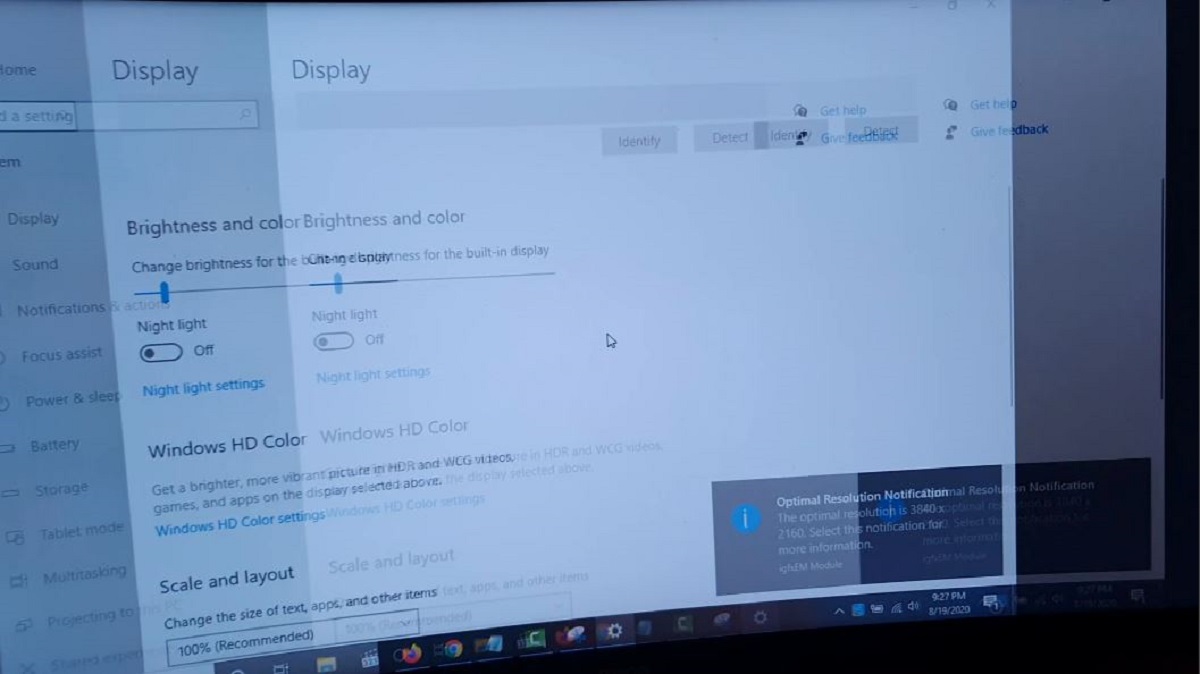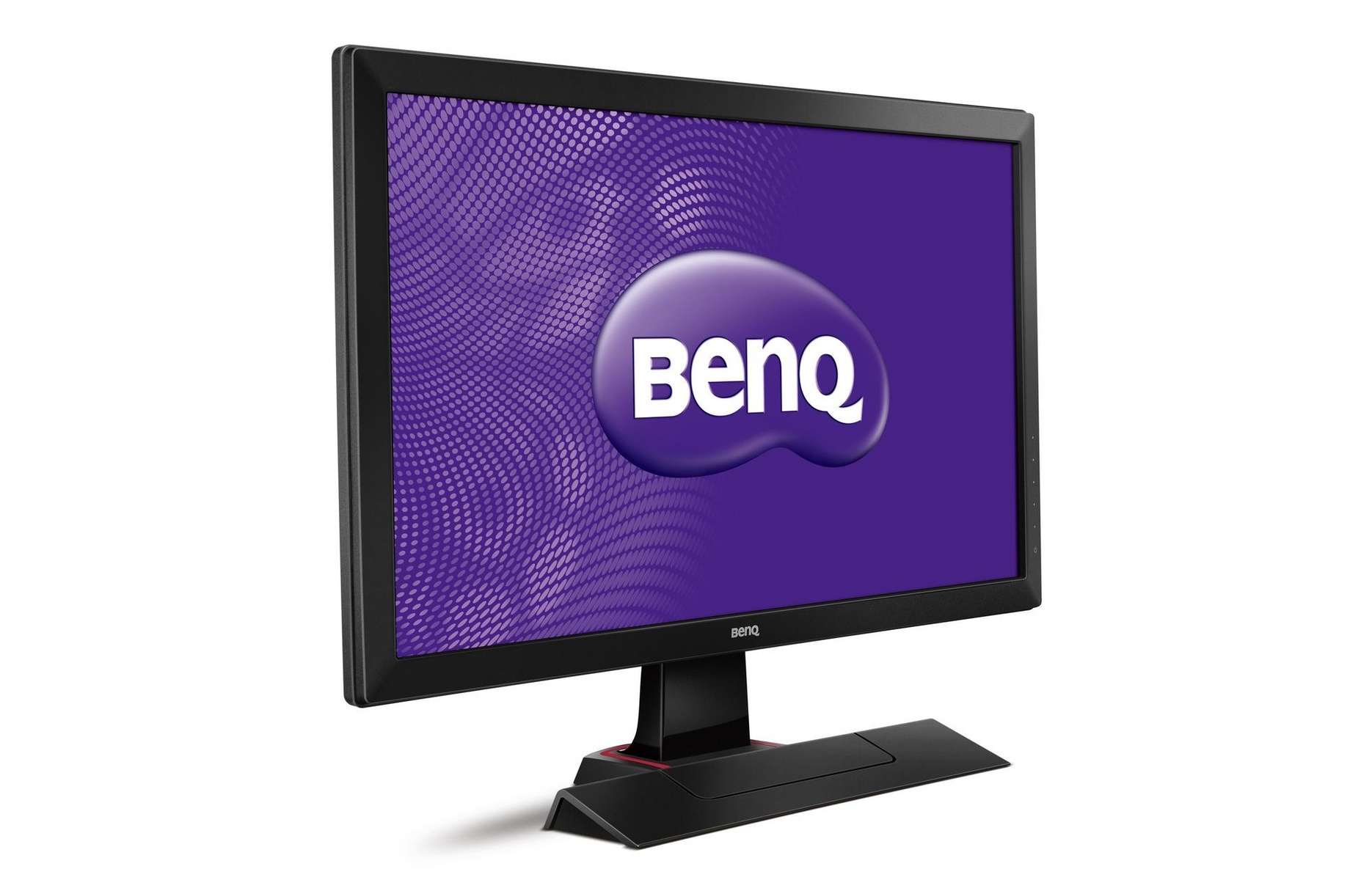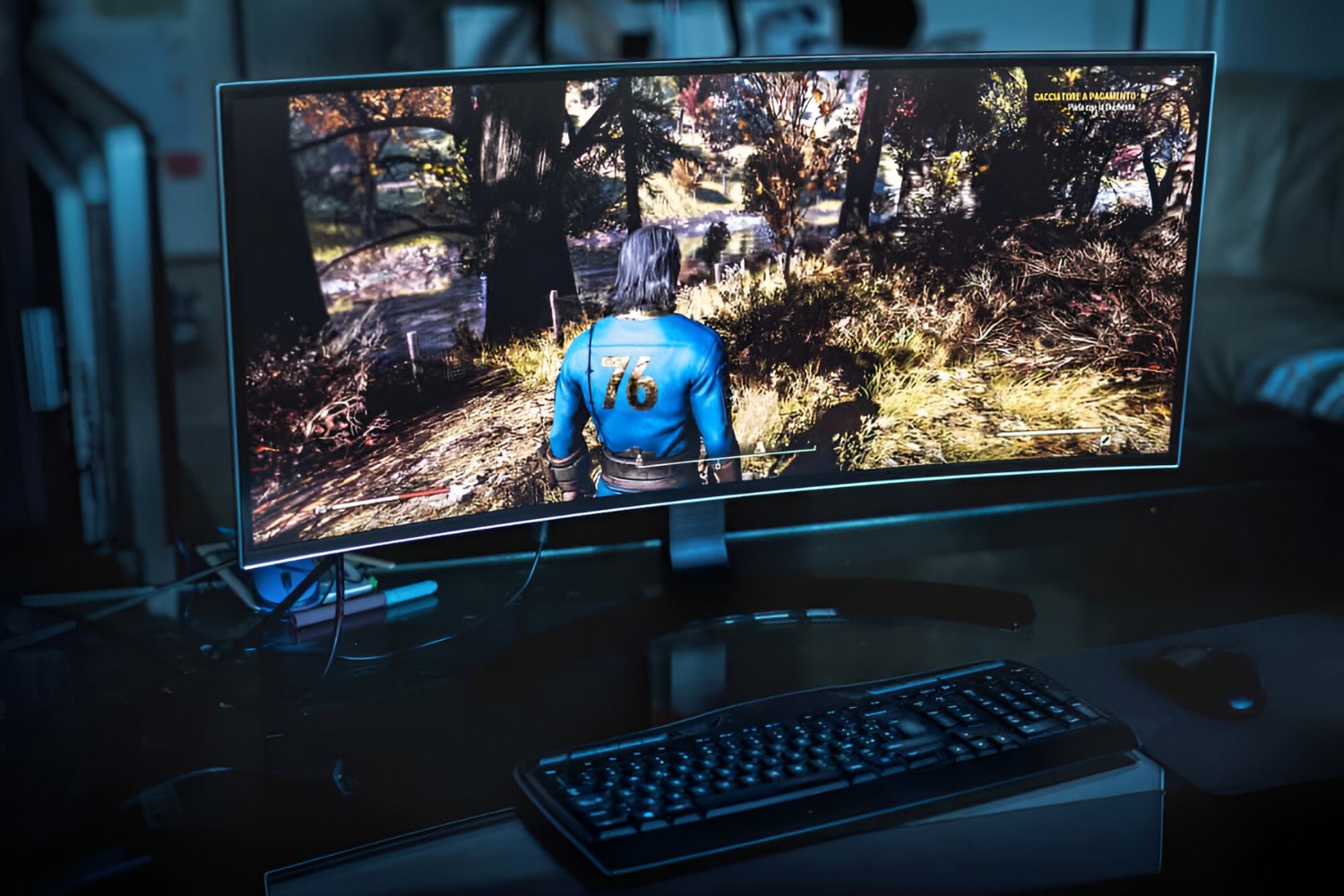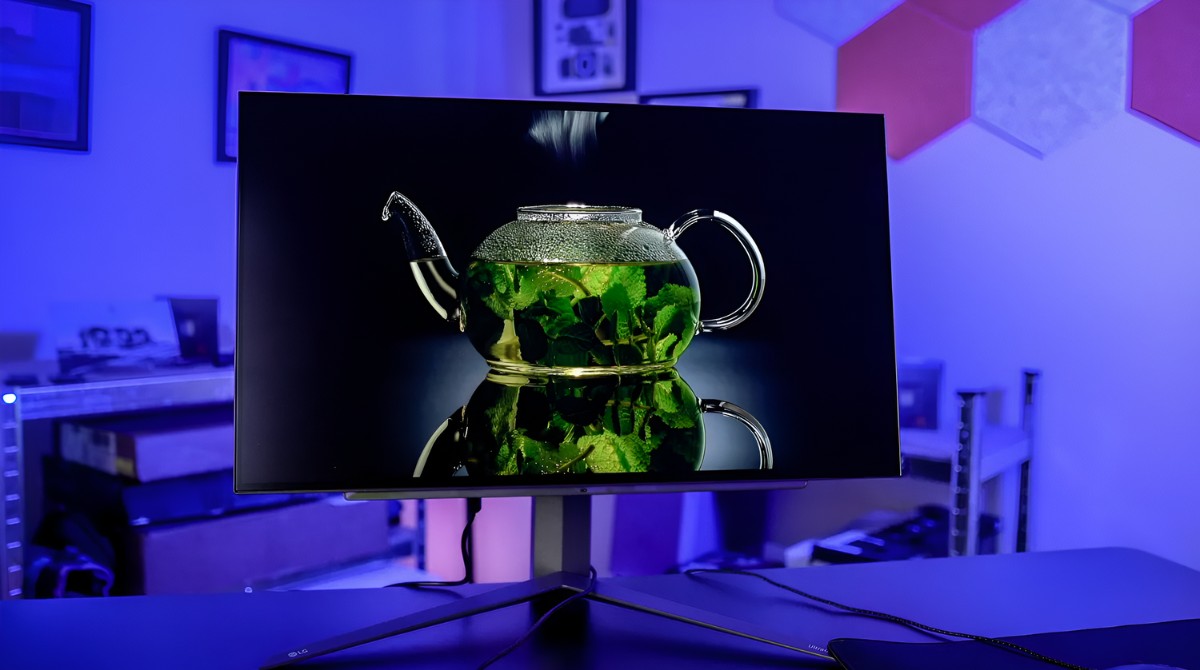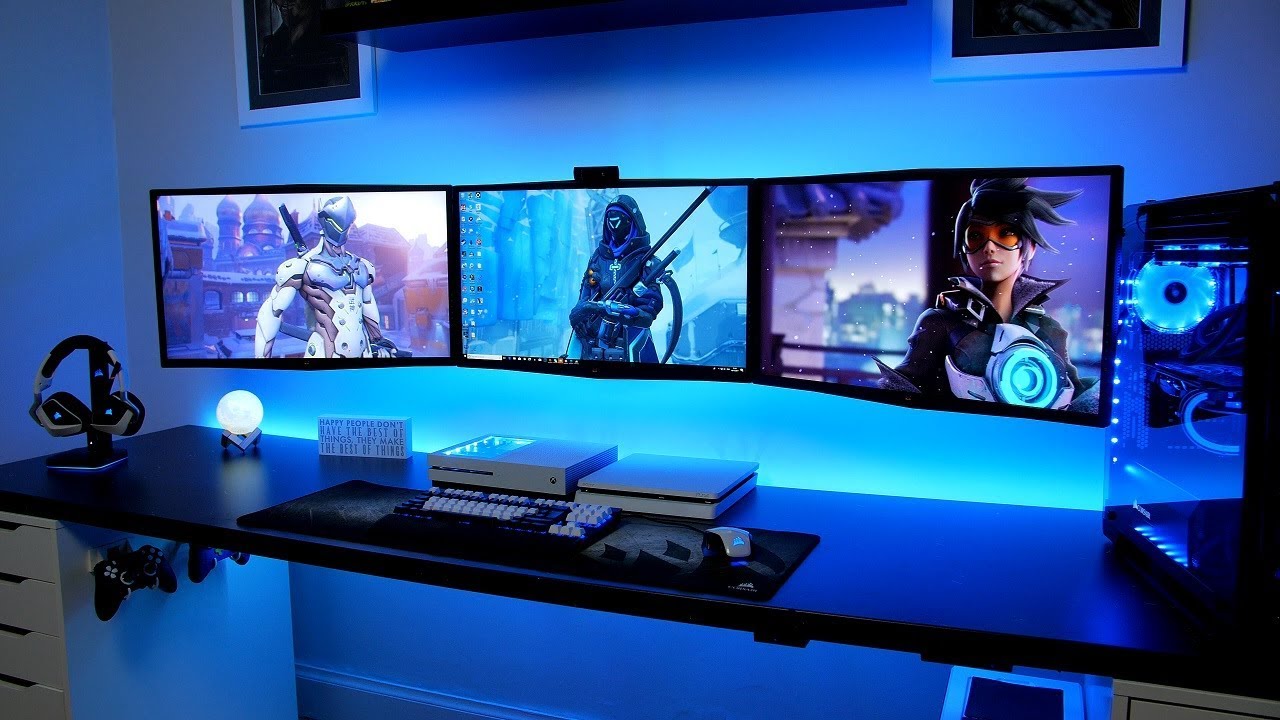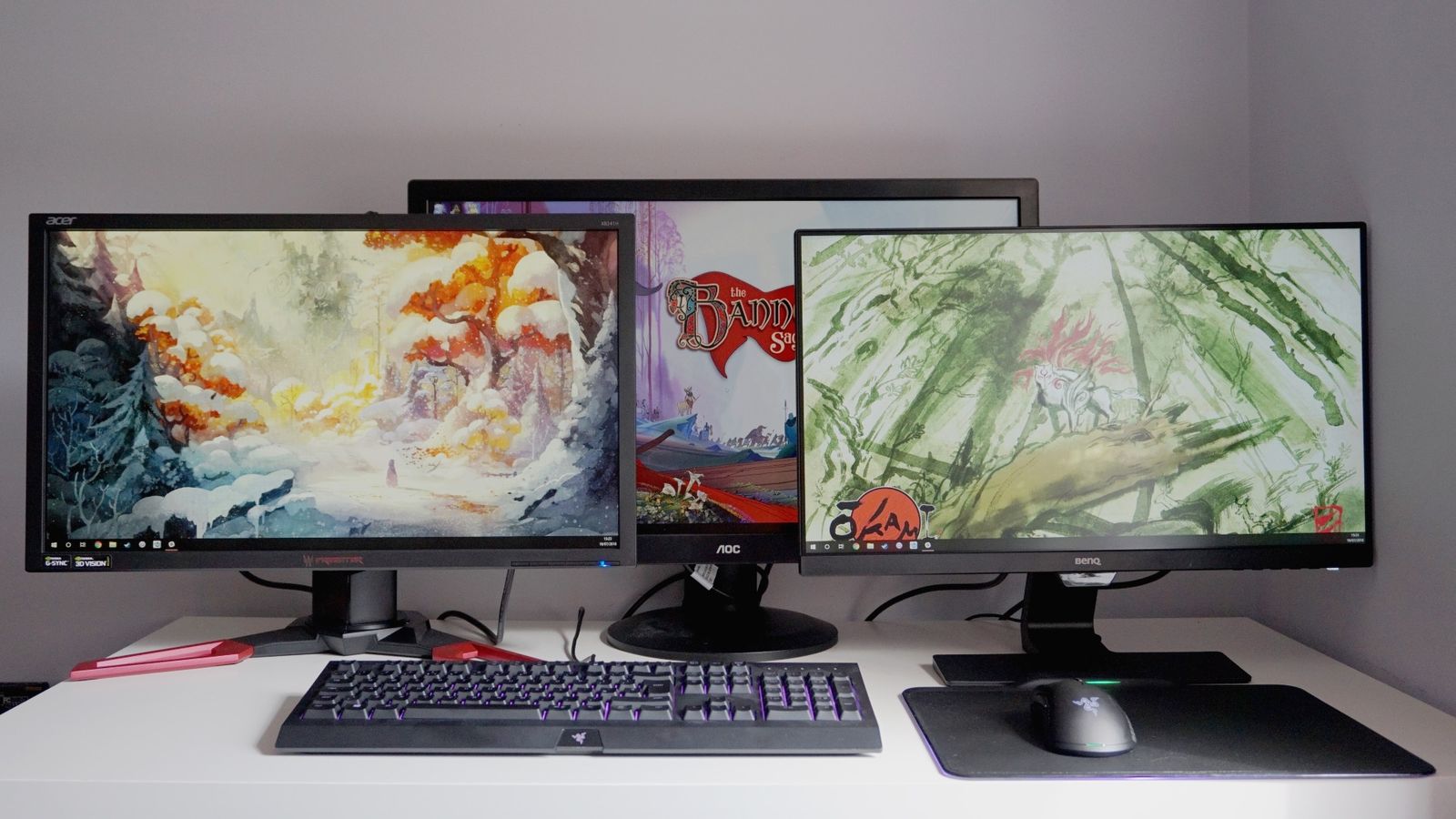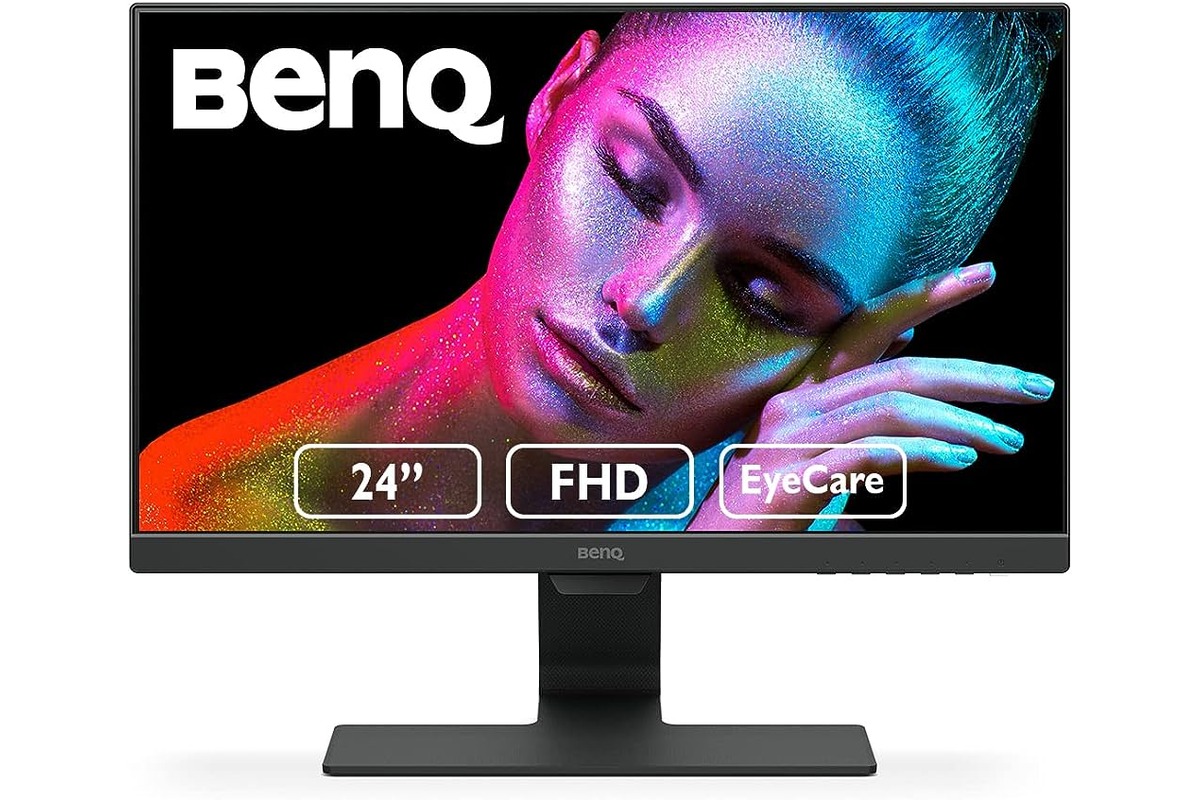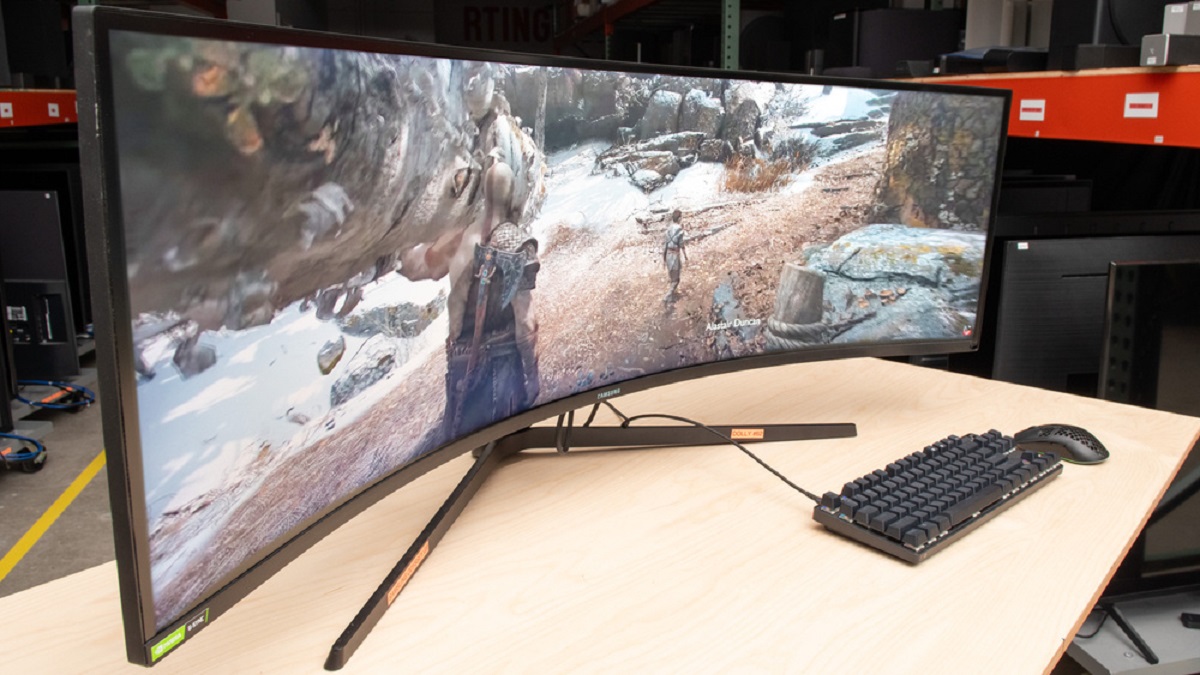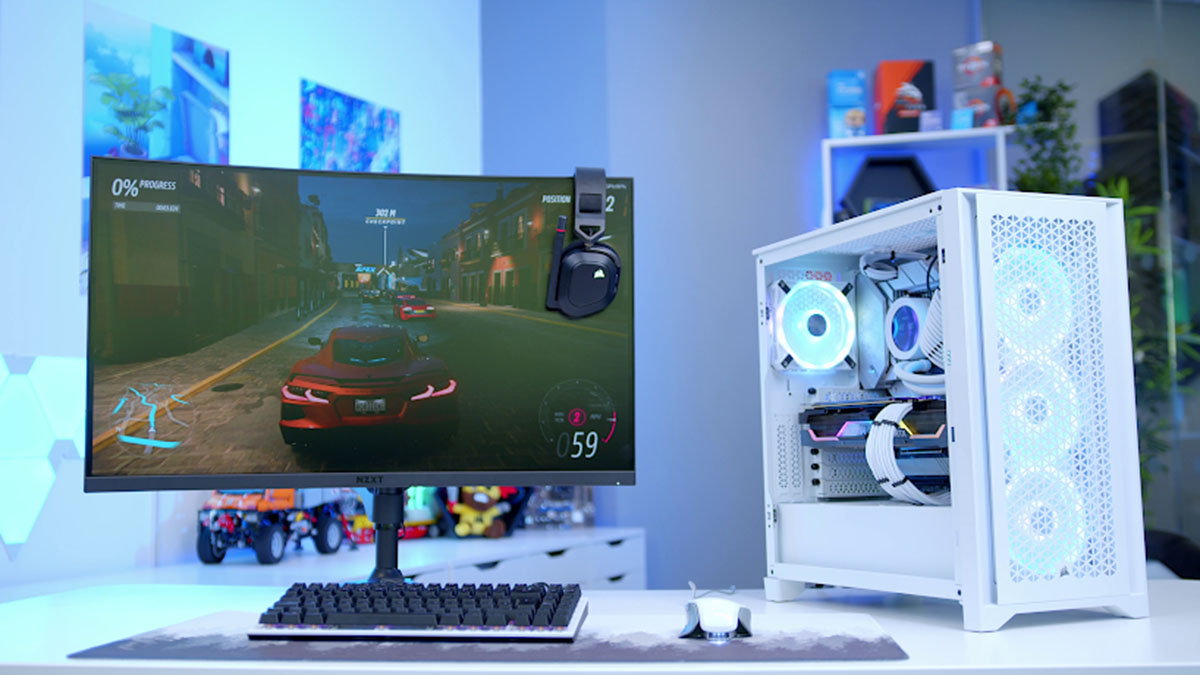Introduction
Imagine sitting down at your computer to get some work done or enjoy your favorite video, only to be constantly interrupted by a flickering monitor. It can be not only annoying but also distracting and detrimental to your productivity. But why does your monitor flicker in the first place? In this article, we will explore the causes behind monitor flickering and provide troubleshooting tips to help you fix the issue.
Monitor flickering can occur on various types of screens, including LCD, LED, and CRT monitors. It manifests as rapid changes in brightness or visible lines that disrupt the steady display of images on your screen. There are several factors that can contribute to this frustrating problem, ranging from simple cable issues to more complex hardware malfunctions or electrical interference.
Understanding the causes of monitor flickering is crucial as it allows you to pinpoint the root of the problem and take appropriate measures to resolve it. By following the troubleshooting steps outlined in this article, you’ll be able to eliminate the flickering and enjoy a smooth visual experience while using your computer.
Causes of Monitor Flickering
Monitor flickering can be caused by various factors, ranging from simple connectivity issues to hardware malfunctions. Understanding these causes is essential in troubleshooting and fixing the problem. Let’s explore the common reasons behind monitor flickering:
- Loose connection or faulty cables: One of the most common causes of monitor flickering is a loose or faulty cable connection. Check the cables connecting your monitor to the computer and ensure they are securely plugged in.
- Outdated or incompatible graphics drivers: Graphics drivers enable the computer to communicate with the monitor. Outdated or incompatible drivers can result in monitor flickering. Ensure that your graphics drivers are up-to-date.
- Screen resolution and refresh rate settings: Incorrect screen resolution or incompatible refresh rate settings can cause flickering. Make sure your monitor’s resolution and refresh rate settings are compatible with your computer’s capabilities.
- Electrical interference: Electrical interference from nearby devices or faulty power outlets can lead to monitor flickering. Keep your monitor away from potential sources of interference, such as speakers, microwaves, or other electronic devices.
- Overheating: Excessive heat can cause components inside your monitor to malfunction, leading to flickering. Ensure proper cooling and ventilation to prevent overheating.
- Faulty monitor or hardware issues: If all other potential causes have been ruled out, it’s possible that your monitor or other hardware components are defective. Consider testing your monitor on another computer or using a different monitor to isolate the issue.
Identifying the specific cause of monitor flickering can help in resolving the issue effectively. However, in some cases, multiple factors may contribute to the problem, requiring a combination of troubleshooting steps to achieve a solution.
Loose connection or faulty cables
A loose connection or faulty cables are often the primary culprits behind monitor flickering. Even a slightly loose connection can disrupt the seamless transmission of signals between your computer and monitor, resulting in flickering or intermittent display issues. Here are a few steps you can take to tackle this problem:
- Check all cable connections: Begin by inspecting the cables that connect your monitor to the computer. Ensure that they are firmly plugged in at both ends. Gently wiggle the cables to see if the flickering intensifies, indicating a loose connection.
- Replace faulty cables: If you find any damaged or frayed cables, it is recommended to replace them. Faulty cables can compromise the quality of the signal being transmitted, leading to flickering or even a complete loss of display.
- Consider using high-quality cables: Investing in high-quality cables can minimize the chances of connectivity issues and improve the overall performance of your setup. Look for cables that are specifically designed for your monitor’s connection type (such as HDMI, DVI, or DisplayPort).
- Secure the cable connections: After confirming that all cables are in good condition, securely fasten them to the respective ports on both the computer and monitor. This step ensures a stable connection and reduces the likelihood of flickering due to loose cables.
Taking the time to investigate and rectify any loose connection or faulty cables can help resolve monitor flickering issues. It is a simple yet crucial step in troubleshooting and ensuring a reliable and uninterrupted display experience.
Outdated or incompatible graphics drivers
Graphics drivers play a crucial role in facilitating communication between your computer’s operating system and the monitor. Outdated or incompatible graphics drivers can often cause monitor flickering. Here are some steps to address this issue:
- Identify your graphics card: Determine the make and model of your graphics card. You can find this information through the Device Manager (Windows) or System Information (Mac).
- Check for driver updates: Visit the official website of the graphics card manufacturer and look for driver updates specific to your graphics card model. Download and install the latest driver version available.
- Automated driver update tools: Alternatively, you can utilize automated driver update tools. These tools can scan your system, detect outdated drivers, and automatically download and install the latest versions.
- Restart your computer: After updating the graphics drivers, restart your computer to apply the changes. This ensures that the updated drivers are properly loaded.
- Compatibility check: In some cases, monitor flickering can occur if the graphics drivers are not compatible with your operating system or other software. Ensure that the drivers you install are compatible with your specific configuration.
By keeping your graphics drivers up-to-date and compatible, you can optimize the performance of your monitor and reduce the chances of flickering. Regularly checking for driver updates is a good practice to ensure a stable and reliable display experience.
Screen resolution and refresh rate settings
Incorrect screen resolution or incompatible refresh rate settings can also contribute to monitor flickering. Adjusting these settings can help resolve the issue. Here’s what you can do:
- Access display settings: Right-click on your desktop and select “Display settings” (Windows) or go to “System Preferences” and click on “Displays” (Mac) to access the display settings.
- Check the resolution: Ensure that the screen resolution is set to the recommended or native resolution for your monitor. Using a lower resolution can result in scaling issues and cause flickering.
- Adjust the refresh rate: The refresh rate determines how many times the screen refreshes per second. Incompatible refresh rates can lead to flickering. Try changing the refresh rate to a different value, such as 60Hz or 75Hz, to see if it resolves the issue.
- Test different resolutions and refresh rates: If the recommended resolution and refresh rate are not resolving the flickering problem, experiment with different combinations of resolutions and refresh rates to find the most stable configuration for your monitor.
- Apply the changes: After adjusting the resolution and refresh rate settings, click “Apply” or “OK” to save the changes. Your screen may temporarily go blank or flicker during this process.
Finding the optimal resolution and refresh rate settings for your monitor can significantly reduce flickering and enhance the overall visual experience. Experimenting with different settings and selecting the most suitable combination can help eliminate this issue.
Electrical Interference
Electrical interference from nearby devices or faulty power outlets can also contribute to monitor flickering. Minimizing or eliminating sources of electrical interference is essential. Here are some steps to consider:
- Keep devices away from your monitor: Place other electronic devices, such as speakers, routers, or cordless phones, away from your monitor. These devices can emit electromagnetic signals that interfere with the monitor’s display.
- Check power outlets and cables: Ensure that the power outlets you are using are in good condition. Faulty outlets or loose power cables can cause electrical fluctuations that lead to monitor flickering. Use surge protectors to safeguard against power surges and fluctuations.
- Use shielded cables: Replace your monitor’s cables with shielded ones. Shielded cables help reduce electrical interference by providing insulation from external electromagnetic signals.
- Test in different locations: If you suspect electrical interference, try moving your computer and monitor to a different location within your home or office. Sometimes, the wiring or overall electrical setup in a particular area can be the cause of the flickering.
By minimizing electrical interference, you can create an environment that promotes a stable and flicker-free display on your monitor. Taking these precautions can greatly improve the overall performance of your setup and reduce frustration caused by flickering screens.
Overheating
Overheating can be another factor that contributes to monitor flickering. When the internal components of your monitor become too hot, it can lead to malfunctions and flickering. To combat this issue, follow these steps:
- Ensure proper ventilation: Make sure that your monitor is placed in a well-ventilated area. Avoid blocking the vents or obstructing the airflow around the monitor. Proper ventilation helps dissipate heat and keeps the components cool.
- Clean the monitor: Dust accumulation on the monitor’s vents and other components can restrict airflow, causing overheating. Regularly clean your monitor using a soft cloth or compressed air to remove dust and debris.
- Monitor placement: Avoid placing your monitor in direct sunlight or near heat sources like radiators or heaters. Excessive exposure to heat can accelerate the temperature rise and contribute to monitor overheating.
- Cooling fans or pads: Consider using additional cooling fans or laptop cooling pads to help dissipate heat. These accessories can improve airflow around your monitor and prevent overheating, especially if you have a gaming monitor or use your computer for resource-intensive tasks.
- Monitor temperature monitoring: Some monitors offer built-in temperature monitoring features. Check if your monitor provides temperature readings and ensure that it does not exceed the recommended operating temperature range.
Preventing overheating is crucial for maintaining the longevity and performance of your monitor. By implementing these preventative measures, you can mitigate the risk of overheating-related issues, such as flickering, and ensure a stable and reliable display experience.
Faulty Monitor or Hardware Issues
If none of the previous troubleshooting steps have resolved the monitor flickering issue, it is possible that your monitor or other hardware components are faulty. Here are some steps to help you identify and address these potential issues:
- Test the monitor on another computer: Connect your monitor to another computer to see if the flickering issue persists. If the problem occurs on a different computer as well, it indicates a fault with the monitor itself.
- Replace or repair the monitor: If the flickering continues on another computer or if the monitor is still under warranty, consider contacting the manufacturer’s support for repair or replacement options.
- Inspect other hardware components: Faulty graphics cards, motherboard issues, or incompatible hardware can also cause monitor flickering. Consult with a professional or your computer manufacturer to diagnose and replace any faulty hardware.
- Update BIOS and firmware: Outdated BIOS or firmware can contribute to hardware-related issues. Check for updates on your computer manufacturer’s website and install them to ensure compatibility and stability.
- Consult with technical support: If you’re not confident in troubleshooting hardware issues yourself, seek assistance from technical support or a professional technician who specializes in computer hardware.
While troubleshooting faulty monitor or hardware issues can be more complex, it is essential to explore these possibilities if all other troubleshooting steps have been exhausted. Identifying and resolving hardware-related problems will help ensure a long-term solution to the monitor flickering issue.
Troubleshooting and Fixing Monitor Flickering
Now that we have explored the common causes of monitor flickering, let’s summarize the troubleshooting steps you can take to fix this issue:
- Check and secure cable connections: Ensure that all cable connections between your computer and monitor are secure and free from damage. Replace any faulty cables that may be causing connectivity issues.
- Update graphics drivers: Keep your graphics drivers up-to-date by visiting the manufacturer’s website or using automated driver update tools. Outdated or incompatible drivers can lead to flickering.
- Adjust screen resolution and refresh rate: Make sure that your monitor’s screen resolution and refresh rate settings are compatible with your computer’s capabilities. Experiment with different settings to find the most stable configuration.
- Reduce electrical interference: Keep electronic devices away from your monitor, check power outlets for faults, use shielded cables, and consider moving your setup to a different location if necessary to minimize electrical interference.
- Ensure proper cooling and ventilation: Maintain proper ventilation around your monitor to prevent overheating. Clean the monitor regularly and consider using additional cooling fans or pads if needed.
- Test the monitor and hardware for faults: If all other troubleshooting steps have been unsuccessful, test your monitor on another computer or consult with a professional to diagnose and address any faulty hardware issues.
It’s important to note that the steps above are not a comprehensive list, and the specific troubleshooting process may vary depending on your monitor model and computer configuration. If you’re unsure or need additional assistance, consult the manufacturer’s documentation or reach out to technical support for further guidance.
By following these troubleshooting steps and addressing the underlying causes of monitor flickering, you can restore a stable and flicker-free display, allowing you to work or enjoy your content without distractions or interruptions.
Check and Secure Cable Connections
One of the first steps in troubleshooting monitor flickering is to check and secure the cable connections between your computer and monitor. Even a slight looseness or damage in the cables can disrupt the signal transmission and result in flickering. Here’s what you can do:
- Inspect the cable connections: Begin by visually inspecting the cables that connect your monitor to the computer. Ensure that all connections are secure and properly plugged in at both ends.
- Check for cable damage: Examine the cables for any signs of damage, such as frayed or bent connectors or exposed wires. If you notice any damage, it is crucial to replace the cable to eliminate potential connectivity issues.
- Reinsert the cables: If the connections appear loose, gently unplug and reinsert the cables, ensuring a snug and secure fit. Sometimes, a simple reinsertion can establish a more stable connection and resolve flickering problems.
- Try different cables: If you suspect that the cables themselves are causing the flickering, try using different cables to see if the issue persists. Use cables that are known to be in good condition and compatible with your monitor and computer’s connection ports.
- Consider cable length and placement: Excessive cable length or tangled cables can also contribute to signal loss and flickering. Keep cables organized and avoid excessive lengths, as shorter cables generally provide better signal integrity.
Taking the time to check and secure cable connections is a simple yet effective troubleshooting step. By ensuring that the cables are properly connected, undamaged, and compatible with your setup, you can minimize the chances of flickering caused by signal interruptions or weak connectivity.
Update Graphics Drivers
Outdated or incompatible graphics drivers can often be the culprit behind monitor flickering. Graphics drivers act as a bridge between your computer’s operating system and the graphics card, facilitating the smooth display of images on your monitor. Here’s what you can do to update your graphics drivers:
- Identify your graphics card: Determine the make and model of your graphics card. You can usually find this information in the Device Manager (Windows) or System Information (Mac).
- Visit the manufacturer’s website: Visit the official website of the graphics card manufacturer, such as NVIDIA, AMD, or Intel. Navigate to the Support or Driver section of the website.
- Download the latest drivers: Look for the drivers specific to your graphics card model and the operating system you are using. Download the latest version of the drivers available.
- Install the updates: Once the driver download is complete, run the installer and follow the on-screen instructions to install the updates. It may require restarting your computer to complete the installation.
- Automated driver update tools: Alternatively, you can utilize automated driver update tools such as Driver Booster, DriverMax, or Snappy Driver Installer. These tools can scan your system, detect outdated drivers, and automatically download and install the latest versions.
Updating your graphics drivers ensures that you have the most current and compatible software for your graphics card, minimizing the chances of monitor flickering caused by driver issues. It is recommended to keep your graphics drivers up-to-date and periodically check for updates to optimize performance and stability.
Adjust Screen Resolution and Refresh Rate
Incorrect screen resolution or incompatible refresh rate settings can also contribute to monitor flickering. Adjusting these settings can help resolve the issue and ensure a stable display. Here’s what you can do:
- Access display settings: Right-click on your desktop and select “Display settings” (Windows) or go to “System Preferences” and click on “Displays” (Mac) to access the display settings.
- Check the screen resolution: Ensure that your monitor is set to its recommended or native resolution. Using a lower resolution can result in scaling issues and cause flickering. If the recommended resolution is not available, try a resolution that maintains the aspect ratio of your monitor.
- Adjust the refresh rate: The refresh rate is the number of times the screen updates and redraws itself per second. An incompatible refresh rate can lead to flickering. In the display settings, adjust the refresh rate and try different options, such as 60Hz or 75Hz, to see if the flickering stops.
- Test different resolutions and refresh rates: If the recommended resolution and refresh rate do not resolve the flickering issue, experiment with different combinations of resolutions and refresh rates to find the most stable configuration for your monitor.
- Apply the changes: After adjusting the resolution and refresh rate settings, click “Apply” or “OK” to save the changes. Your screen may temporarily go blank or flicker during this process, but it should stabilize once the new settings are applied.
Finding the optimal resolution and refresh rate settings for your monitor is essential in reducing flickering and achieving a smooth and stable display. It may require some trial and error, but by experimenting with different settings, you can discover the combination that works best for your monitor and system configuration.
Reduce Electrical Interference
Electrical interference from neighboring devices or faulty power outlets can contribute to monitor flickering. Minimizing or eliminating sources of electrical interference is crucial to ensure a stable and flicker-free display. Here are some steps to consider:
- Keep devices away from your monitor: Position other electronic devices, such as speakers, routers, or cordless phones, away from your monitor. These devices can emit electromagnetic signals that interfere with the monitor’s display, leading to flickering.
- Check power outlets and cables: Ensure that the power outlets you are using are in good condition. Faulty outlets or loose power cables can cause electrical fluctuations and interruptions, resulting in monitor flickering. Use surge protectors to protect against power surges and fluctuations.
- Use shielded cables: Replace your monitor’s cables with shielded ones. Shielded cables have insulation to reduce electrical interference from external sources, helping to maintain a stable and clear signal between your computer and monitor.
- Test in different locations: If you suspect electrical interference, try moving your computer and monitor to a different location within your home or office. Sometimes, the wiring or overall electrical setup in a particular area can be the cause of the flickering.
By minimizing electrical interference, you can create a conducive environment for a stable and flicker-free display on your monitor. Taking these precautions will help ensure that external factors are not causing interruptions and disturbances in the signal transmission, leading to a more enjoyable and uninterrupted computer experience.
Ensure Proper Cooling and Ventilation
Proper cooling and ventilation are essential to prevent monitor flickering caused by overheating. When the internal components of your monitor get too hot, it can lead to malfunctions and result in flickering. Here are some steps to ensure proper cooling and ventilation:
- Position your monitor in a well-ventilated area: Ensure that your monitor is placed in a location that allows for adequate airflow. Avoid blocking the vents or obstructing the air intake and exhaust areas of the monitor.
- Keep ventilation areas clear: Remove any objects or obstructions surrounding your monitor that may hinder proper airflow. Ensure that the vents on the monitor remain unobstructed to allow heat to dissipate effectively.
- Clean the monitor regularly: Dust and debris accumulation can restrict airflow and cause overheating. Clean the monitor regularly using a soft cloth or compressed air, paying special attention to the ventilation areas and the back of the monitor.
- Consider additional cooling measures: If your monitor tends to run hot, consider using additional cooling aids such as cooling fans or laptop cooling pads. These accessories can improve airflow around your monitor and help dissipate heat, especially during resource-intensive tasks or prolonged usage.
- Monitor temperature levels: Some monitors have built-in temperature monitoring features. Check if your monitor provides temperature readings and ensure that it remains within the recommended operating temperature range to avoid overheating-related issues.
Proper cooling and ventilation are essential for maintaining the optimal functioning of your monitor. By implementing these measures, you can effectively dissipate heat and prevent overheating, reducing the chances of monitor flickering and ensuring a smooth and stable display experience.
Test the Monitor and Hardware for Faults
If you’ve exhausted all other troubleshooting steps and are still experiencing monitor flickering, it’s time to explore the possibility of any faulty components. Testing the monitor and hardware can help identify and address any underlying issues. Here’s what you can do:
- Test the monitor on another computer: Connect your monitor to a different computer and observe if the flickering issue persists. If the problem occurs on a different computer as well, it indicates a fault with the monitor itself.
- Contact the manufacturer: If your monitor is still under warranty, it is recommended to contact the manufacturer’s support for further assistance. They may offer repair or replacement options to resolve the issue.
- Inspect other hardware components: Faulty graphics cards, motherboard issues, or incompatible hardware can also cause monitor flickering. Consult with a professional or your computer manufacturer to diagnose and replace any faulty hardware.
- Update BIOS and firmware: Outdated BIOS or firmware can contribute to hardware-related issues. Check for updates on your computer manufacturer’s website and install them to ensure compatibility and stability.
- Professional technical support: If you’re not confident in troubleshooting hardware issues yourself, seek assistance from technical support or a professional technician who specializes in computer hardware. They can accurately diagnose and fix any hardware-related problems affecting your monitor.
Testing the monitor and other hardware components requires a more thorough and in-depth assessment. If all other troubleshooting steps have been unsuccessful, it is essential to consult with professionals who can provide expert guidance and support to resolve the flickering issue effectively.
Conclusion
Dealing with a flickering monitor can be frustrating, but by understanding the common causes and implementing the appropriate troubleshooting steps, you can often resolve the issue and enjoy a stable and flicker-free display experience on your computer.
In this article, we explored various factors that can contribute to monitor flickering, including loose cable connections, outdated graphics drivers, incorrect screen resolution and refresh rate settings, electrical interference, overheating, and faulty hardware. We discussed troubleshooting methods for each of these factors, providing you with practical steps to identify and resolve the underlying issues.
Remember, the first step in troubleshooting is to check and secure cable connections, ensuring a reliable signal transmission. Updating your graphics drivers to the latest versions is crucial to address any software-related flickering problems. Additionally, adjusting the screen resolution and refresh rate settings can help eliminate compatibility issues that may cause flickering.
Reducing electrical interference by keeping devices away from your monitor, using shielded cables, and testing your setup in different locations can help create a more stable environment. Ensuring proper cooling and ventilation is essential to prevent overheating, as excessive heat can lead to monitor malfunctions and flickering.
Lastly, if all other efforts fail, conducting tests on the monitor and other hardware components can help diagnose any faulty elements that may be causing the flickering. Consulting the manufacturer’s support or seeking professional assistance can guide you towards effective solutions.
By following these troubleshooting steps and addressing the underlying causes of monitor flickering, you can achieve a stable and flicker-free display, allowing you to work, play, or stream your favorite content without interruptions or distractions.







